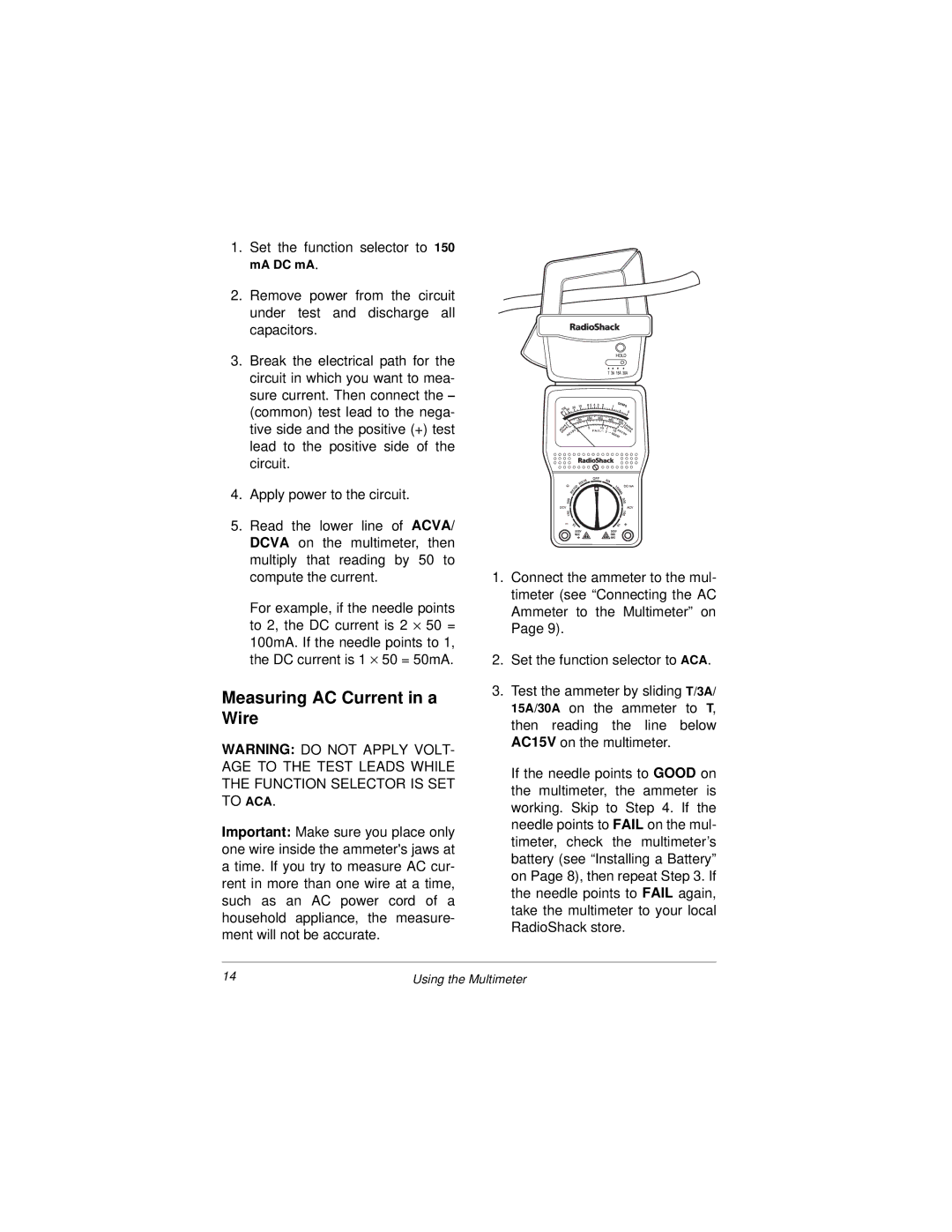
1.Set the function selector to 150 mA DC mA.
2.Remove power from the circuit under test and discharge all capacitors.
3.Break the electrical path for the circuit in which you want to mea- sure current. Then connect the – (common) test lead to the nega- tive side and the positive (+) test lead to the positive side of the circuit.
4.Apply power to the circuit.
5.Read the lower line of ACVA/ DCVA on the multimeter, then multiply that reading by 50 to compute the current.
For example, if the needle points to 2, the DC current is 2 ⋅ 50 =
100mA. If the needle points to 1, the DC current is 1 ⋅ 50 = 50mA.
Measuring AC Current in a Wire
WARNING: DO NOT APPLY VOLT- AGE TO THE TEST LEADS WHILE THE FUNCTION SELECTOR IS SET TO ACA.
Important: Make sure you place only one wire inside the ammeter's jaws at a time. If you try to measure AC cur- rent in more than one wire at a time, such as an AC power cord of a household appliance, the measure- ment will not be accurate.
1.Connect the ammeter to the mul- timeter (see “Connecting the AC Ammeter to the Multimeter” on Page 9).
2.Set the function selector to ACA.
3.Test the ammeter by sliding T/3A/ 15A/30A on the ammeter to T, then reading the line below AC15V on the multimeter.
If the needle points to GOOD on the multimeter, the ammeter is working. Skip to Step 4. If the needle points to FAIL on the mul- timeter, check the multimeter’s battery (see “Installing a Battery” on Page 8), then repeat Step 3. If the needle points to FAIL again, take the multimeter to your local RadioShack store.
14 | Using the Multimeter |
